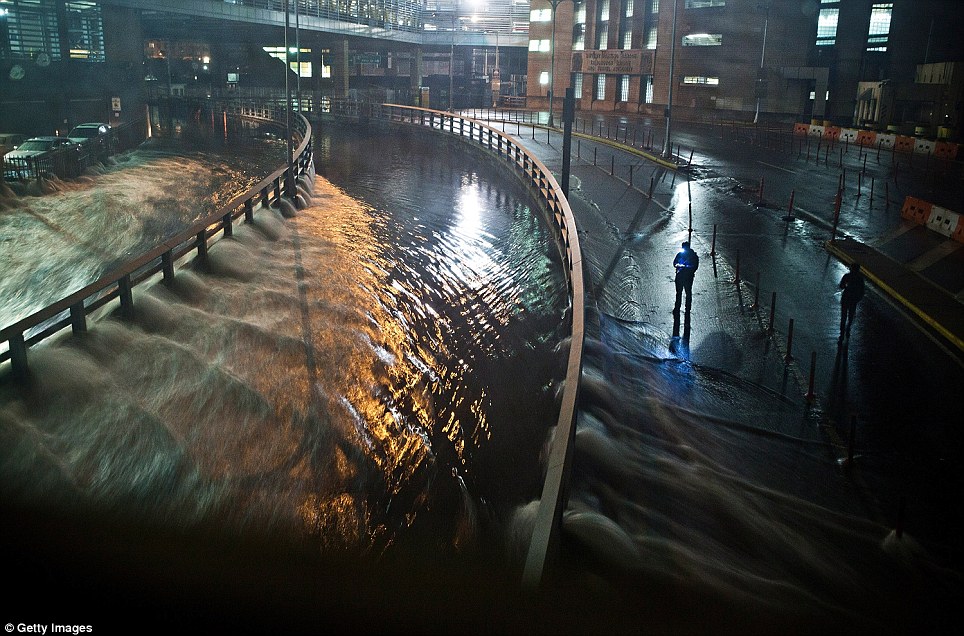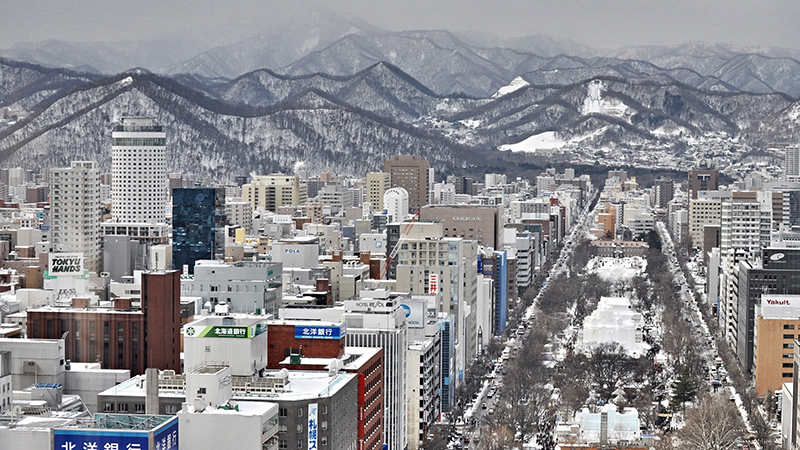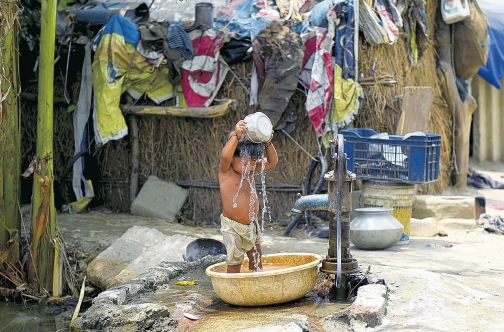Trying to predict how different US cities will be affected by climate change is something like trying to predict the movement of a single molecule in a sea of Brownian motion. Not only are the direct impacts of climate change complex, and not limited to hotter temperatures and higher sea levels, but any prediction needs to take account not only the gradual unfolding of change over time, and the considerable adaptability of human beings and their institutions. Still, this is too important an issue not to take a stab at predicting, recognizing that predictions do not have a very good track record.
Humans can deal with precipitation, and even with extreme storm events–as long as they don’t happen too often–more readily than they can live either underwater, or without water.
Even those conditions can be addressed, up to a point, and not by growing gills. Kim Stanley Robinson’s novel 2312 contains a vivid description of a vibrant future Manhattan where the streets have become waterways, and people move between buildings on bridges and skywalks. It’s expensive, but doable.

Not all coastal cities will be undone by higher sea levels. Depending on topography, political will and resources, some will adapt–whether by building sea walls or surrendering to what we might call ‘Venicization’– and go on. Others will not, and may gradually be lost. Another possibility is that some cities may do a sort of internal triage: we can’t save the whole city, but we can save part of it. Given how our society works these days, that part will most probably be the part with the most property value at stake. That might happen in Miami, which has a very small, very dense, high-value core surrounded by hundreds of square miles of low-density development all sitting on incredibly flat, porous limestone.
Water can be desalinated, or moved thousands of miles. It’s (only) 1,500 miles as the crow flies from Lake Michigan to Phoenix. I doubt that a 1,500 mile long pipeline would be a good idea, but if there’s enough political will and money, it could be done. Las Vegas already recycles most of its water. The point is that not all coastal or arid zone cities will disappear. Some will, some won’t, and some will survive, but as much smaller places. Some wealthy cities like San Francisco, Seattle or New York, are likely to do well. They have already started thinking about how to tackle these issues, and they can access enough resources to make a difference. But I would not rule the Sunbelt out any time soon.
As others have pointed out, many of the cities best situated to deal with climate change are the old Rustbelt cities like Detroit or Cleveland. They sit on lakes or rivers, rather than oceans, they have access to ample water supplies, and they are relatively unsusceptible to catastrophic events like hurricanes. Their climates could get quite a bit warmer than they are today and remain livable, and increased rain and snow are fairly manageable. Two million people live comfortably in Sapporo, Japan, which on average gets twice as much snowfall as Buffalo.

It’s tempting to assume, therefore, that millions of Sunbelt residents will reverse course and move to Detroit or Buffalo, but why would they? Unless Detroit or Buffalo turn into a hotbed of economic growth, what will they do when they get there? Where, when and why people move is complicated. People, for the most part, are far from footloose. They prefer to settle in one place, and when they move, it is usually to some place close by. In 2015, nearly 45 million Americans moved; nearly 60% moved within the same city or county, most of the rest in the same state. My guess is that if things become too bad in Phoenix, for instance, people will look to the nearest place, the place that most closely resembles Phoenix, where things are not (yet) as bad. It might be Dallas, it might be Las Vegas, but at least initially, it’s not likely to be Detroit.
For many years, climate change is likely to be a gradual process. Year by year, the water level will get a little higher or the snowpack a little thinner. Some cities will adapt better than others, and either figure out a way to become sustainable, or buy more time for themselves. In the meantime, relatively few people will uproot themselves years in advance on the premise that many years later, things will become intolerable. This is not like Katrina, when the waters suddenly came rushing in.
At some point, though, something will have to give. If conditions keep deteriorating, and adaptation measures are not up to the job, change can be managed for a long time, but not forever. At some point, the problems cascade and the system implodes. That’s when its 120 in the shade, the electrical grid goes down, and the taps dry up, all at the same time. At that point, people start becoming refugees, not migrants. That means that they become a resettlement problem, for FEMA or whichever non-profit agencies they hire to build the refugee camps, and figure out where to move the refugees to and get them back on their feet.

It’s likely to be traumatic. If, as I expect, most of the population in the cities that will be undone by climate change will still be living there when their systems collapse, millions of people will find themselves homeless. Moreover, it is likely that by then the resources of our governmental and social service systems will have already been stretched to the utmost by decades of steady environmental and economic decline. At that point, the problem will be far greater than what happens to any one city; it will be about whether we will be able to survive as an organized, functioning society.


